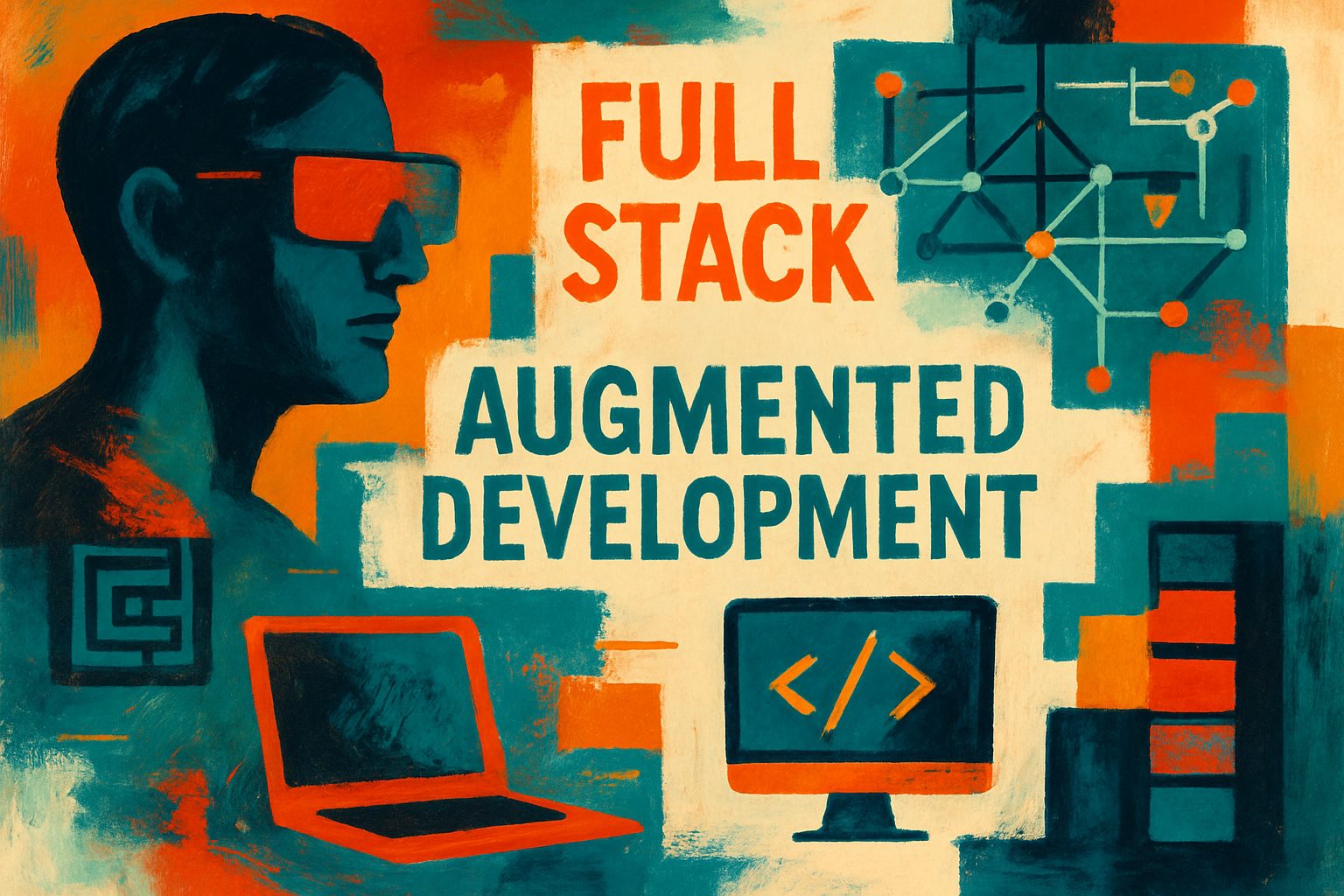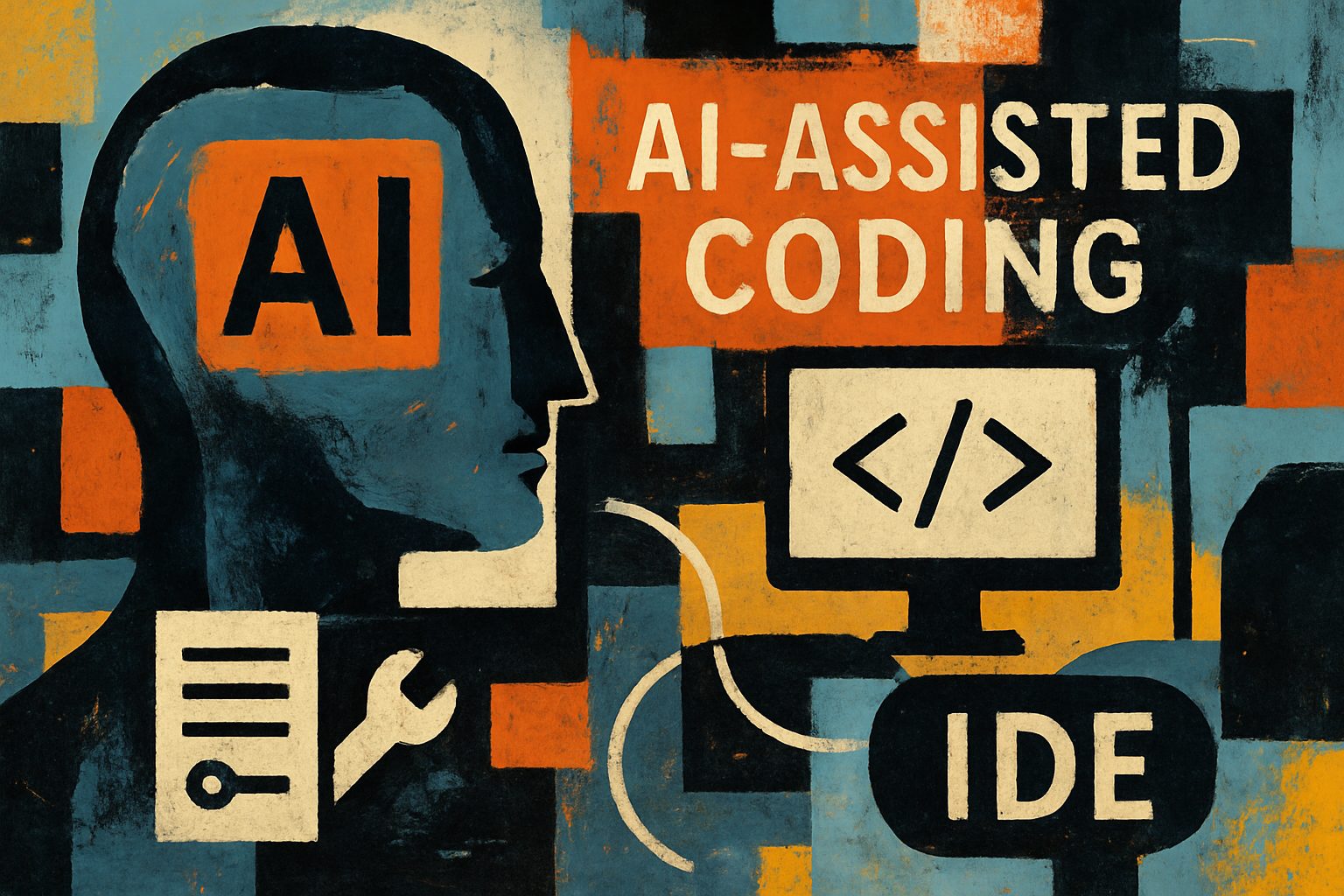
Unlocking Innovation: The Future of Full Stack and Augmented Development
Discover the exciting intersection of full stack and augmented development in our latest analysis. This article uncovers innovative frameworks and strategies that empower developers to create impactful applications while bridging critical knowledge gaps.
In an era where technology is evolving at an unprecedented pace, the demand for versatile development frameworks has never been higher. As businesses and developers seek to harness the full potential of both full stack and augmented development, the need for innovative ideas and strategies becomes paramount. This article delves into a meticulous exploration of concepts that not only bridge the gap between front-end and back-end development but also integrate augmented capabilities, offering a holistic view of the current landscape.
Drawing upon a comprehensive review of 30 diverse sources, this report uncovers a treasure trove of insights tailored for both seasoned developers and those new to the field. By examining emerging trends, best practices, and practical applications, we aim to equip readers with the knowledge necessary to navigate the complexities of full stack and augmented development. Expect to find valuable strategies and thought-provoking ideas that will empower you to enhance your projects and stay ahead in an increasingly competitive environment.

Introduction
In the ever-evolving landscape of software development, the integration of full stack development with augmented development stands out as an exciting frontier. This combination not only promises to enhance user experiences but also offers developers innovative tools and frameworks to create powerful applications. However, our research highlights some critical knowledge gaps that need addressing to fully harness this potential.
In this analysis, we will delve into the key findings from our research, exploring the gaps in understanding, the popular frameworks that can facilitate this integration, and the tools available for augmented development. By the end, you’ll have a clearer picture of how to navigate this dynamic field and leverage the right resources for your projects.
Knowledge Gaps in Integration of Full Stack and Augmented Development
One of our primary research focuses was identifying the knowledge gaps in integrating full stack and augmented development. Here are the critical areas that need further exploration:
-
Lack of Comprehensive Frameworks: There’s a noticeable absence of holistic models that effectively meld full stack and augmented development principles. Developers need frameworks that guide them in building applications that utilize augmented features seamlessly.
-
Insufficient Research on User Experience (UX) Design: While augmented development emphasizes enhanced user interaction, there’s not enough research on implementing UX design principles that maximize the benefits of augmented interfaces. A deeper understanding of user experience design is crucial for adoption.
-
Limited Exploration of Cross-Platform Integration: As AR technologies proliferate, ensuring compatibility across various devices is a challenge for full stack developers. Research is needed to explore best practices for integrating AR functionalities without compromising performance.
-
Inadequate Focus on Security Concerns: The integration of AR features raises new security vulnerabilities, particularly regarding user data. Understanding how to secure augmented applications in this context is essential.
-
Emerging Technologies and Tooling: The tools available for developing augmented features in full stack applications are still developing. Research must focus on identifying and integrating these tools into existing environments.
-
Limited Case Studies and Practical Applications: There’s a gap in extensive case studies that demonstrate the successful integration of these two domains, limiting developers’ ability to learn from practical implementations.
-
Understanding the Impact of AI and Machine Learning: The role of AI and machine learning in enhancing full stack and augmented development is not well understood. Researching how these technologies can be leveraged will be invaluable.
-
Interdisciplinary Collaboration: Successful integration requires effective teamwork across various fields, including software development, UX design, and AR technology, yet there’s little guidance on fostering this collaboration.
-
Scalability Issues: As applications grow, scalability becomes a critical concern. Research is needed on how to scale augmented features within full stack applications without compromising user experience.
-
Methodology for Continuous Learning: Given the rapid evolution of technologies, developing methodologies that encourage continuous learning among developers regarding augmented capabilities is vital.
By addressing these gaps, we can establish a solid foundation for future studies and practices in both full stack and augmented development.
Popular Full Stack Development Frameworks
As we explore frameworks that support augmented development, here’s a detailed look at some of the most popular options, including their pros and cons:
| Framework | Pros | Cons |
|---|---|---|
| React.js | – Component-based architecture – Strong community support – High performance |
– Steeper learning curve for beginners – Requires additional libraries for complete solutions |
| Angular | – Comprehensive solution – Two-way data binding – Strong tooling |
– Verbose syntax – Performance issues in large applications |
| Vue.js | – Easy to learn – Flexible and lightweight – Reactive data binding |
– Smaller community compared to React and Angular – Limited resources for large-scale applications |
| MERN Stack | – Full JavaScript stack – High scalability – Strong performance for real-time applications |
– Can become complex with larger applications – Requires knowledge of multiple technologies |
| Django | – Fast development with built-in features – Strong security – Good for data-driven applications |
– Limited flexibility for complex front-end applications – Steeper learning curve for newcomers |
Framework Insights
-
React.js: This library allows developers to create reusable UI components, making it a favorite for those looking to build dynamic applications. For more on React.js, check out UpGrad.
-
Angular: A robust framework that offers everything needed for single-page applications. Learn more about Angular at FullScale.
-
Vue.js: Known for its gentle learning curve, Vue.js is accessible for beginners and offers flexibility. For in-depth insights on Vue.js, refer to Turing.
-
MERN Stack: This stack combines four powerful technologies, making it an excellent choice for full-stack JavaScript development.
-
Django: Ideal for fast development, Django is favored for data-driven applications, although it may have limitations in flexibility for complex UIs.
By understanding the strengths and weaknesses of these frameworks, you can make informed decisions that align with your project goals.
Tools for Augmented Development
Now, let’s dive into some current tools that enhance augmented development capabilities for full stack developers. Here’s a compilation of notable tools:
| Tool Name | Key Features | Use Cases |
|---|---|---|
| Augment Code | – AI-powered coding assistant – Context-aware code completion – Integrated task management – Works with popular IDEs (VS Code, JetBrains) |
– Large codebase management – Automation of repetitive tasks – Contextual coding suggestions |
| GitHub Copilot | – AI-powered code suggestions – Contextual understanding of existing code – Supports multiple languages |
– Speeding up code writing – Assisting with debugging |
| Codeium | – AI code generation – Supports multiple programming languages – IDE integration with real-time suggestions |
– Rapid prototyping – Learning new languages |
| Tabnine | – AI-driven code completion – Customizable models based on user codebases – Integrates with numerous IDEs |
– Enhancing productivity – Personalized code suggestions |
| Kite | – AI-powered code completions – Integrates with various IDEs – Documentation snippets directly in the IDE |
– Reducing context switching – Improving code quality through better documentation |
Insights on Augmented Development Tools
-
Augment Code: This innovative tool offers a context engine that aids developers in managing both local and remote agents. You can find out more about it here.
-
GitHub Copilot: Utilizing AI, this tool provides real-time code suggestions, making it a great companion for speeding up coding tasks. Learn more about Copilot here.
-
Codeium: This tool supports collaborative coding and real-time suggestions, perfect for teams looking to streamline their development process. Check it out here.
-
Tabnine: It personalizes suggestions based on your coding habits, enhancing productivity significantly. Discover more about Tabnine here.
-
Kite: This AI-powered coding assistant integrates documentation snippets to improve coding efficiency. More information on Kite can be found here.
Final Assessment and Conclusions
In summary, the integration of full stack and augmented development presents a transformative opportunity for the software industry. However, addressing the identified knowledge gaps is crucial for leveraging this potential fully. By focusing on developing comprehensive frameworks, enhancing user experience design, securing applications, and fostering interdisciplinary collaboration, significant advancements can be achieved.
The exploration of popular frameworks and tools provides a solid foundation for developers looking to navigate this dynamic landscape. By utilizing the insights and resources discussed, you can enhance your development capabilities and stay ahead in this rapidly evolving field.
For more insights into the trends and challenges facing full stack development, consider exploring this resource.
Let’s keep the conversation going! What tools or frameworks are you excited to try in your next project?
Vyftec – Full Stack & Augmented Development Solutions
At Vyftec, we excel in delivering comprehensive full stack and augmented development solutions tailored to meet the unique needs of our clients. Leveraging our expertise in AI and machine learning, we seamlessly integrate robust backend systems with intuitive front-end interfaces, ensuring your applications are both powerful and user-friendly. Our recent projects have demonstrated our capability in automating workflows and enhancing data intelligence, utilizing cutting-edge technologies like n8n and Python to drive efficiency and innovation.
With a commitment to Swiss quality and precision, Vyftec stands ready to transform your digital landscape. Let us help you harness the full potential of AI and automation in your projects. Reach out to us today for a consultation and discover how we can elevate your business!
📧 damian@vyftec.com | 💬 WhatsApp


